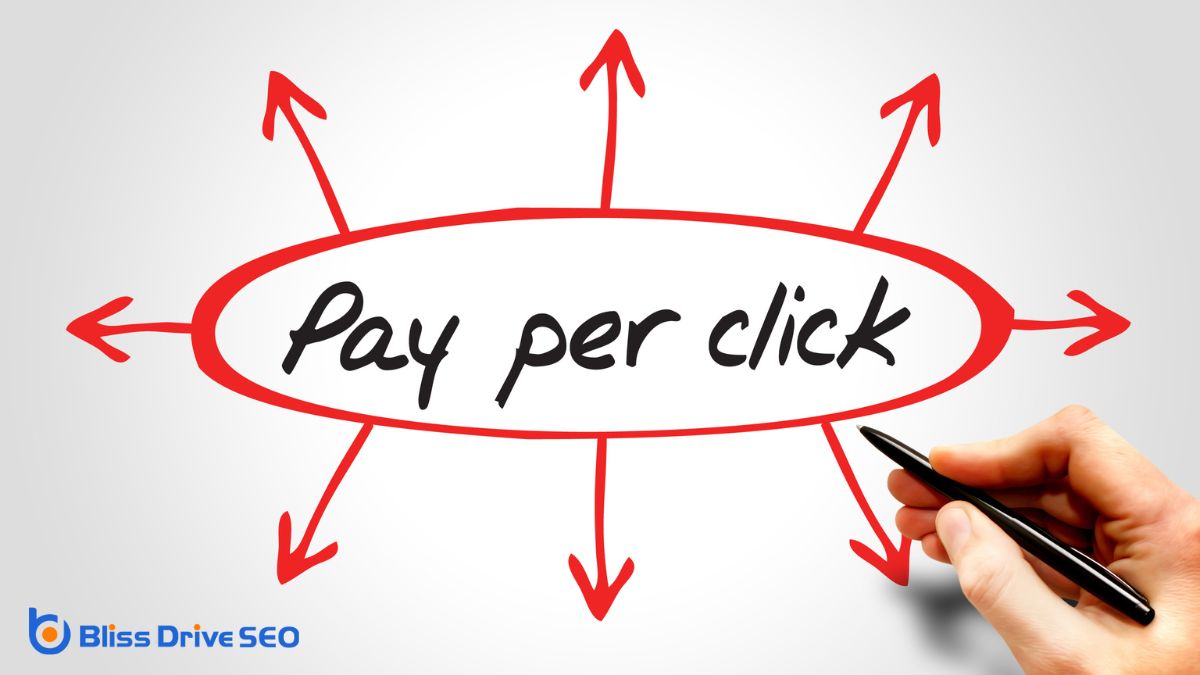Digital Marketing Services
Learn More About Us

PPC, or pay-per-click advertising, is a powerful tool where you pay only when someone clicks your ad. It allows you to target specific audiences through keywordsWords or phrases that users type into search engines to find information. and demographics, ensuring your business reaches potential customers effectively. PPC ads appear on search engines and social media, helping you increase visibility and control your marketing budget. Crafting compelling ads and monitoring performance metricsKey indicators used to measure the effectiveness of affiliate marketing efforts, such as clicks, con... can boost your results. Want to discover more about optimizing your PPC efforts?
When diving into the world of PPC, or pay-per-click advertising, it's crucial to grasp its foundational elements. You start by understanding that PPC is an online advertising model where advertisers pay a fee each time their ad is clicked.
It's a way to buy visits to your site rather than earning them organically. You'll typically encounter PPC ads on search engines like Google or social media platforms.
The beauty of PPC is its targeted nature; you can reach specific audiences based on keywords, demographics, and interests. By setting a budget and bid amount, you control how much you spend.

To understand how PPC advertising works, imagine setting up a virtual auction where advertisers bid for their ads to appear when users search for specific keywords. You choose keywords related to your product or service, then decide how much you're willing to pay each time someone clicks on your ad. Search engines, like Google, use a combination of your bid amount and the quality of your ad to determine its placement. The higher the quality and bid, the better your ad's position. Here's a simple table to illustrate:
| Aspect | Explanation |
|---|---|
| Keywords | Words users search for, triggering your ad |
| Bidding | The amount you're willing to pay per click |
| Ad Quality | How relevant and useful your ad is to the user |
Understanding these elements helps you create effective PPC campaigns.
Although PPC advertising might seem straightforward, it actually encompasses a variety of ad types that cater to different business goals and platforms.
Search ads, for instance, appear on search engine results pages when someone types in a relevant query. They're great for capturing immediate interest.
Display adsVisual-based ads that appear on websites, apps, or social media., on the other hand, are graphic-based and show up on websites within a network, helping you build brand awarenessThe extent to which consumers are familiar with the qualities or image of a particular brand..
Social media adsPaid advertisements that appear on social media platforms. let you target users on platforms like FacebookA social networking site where users can post comments, share photographs, and links to news or othe... or InstagramA photo and video-sharing social networking service owned by Facebook., offering flexibility with audience targeting.
Remarketing ads allow you to reconnect with visitors who didn't convert initially, reminding them of your offerings.
Finally, shopping ads showcase product images and prices directly on search results, which is ideal for e-commerce.
Each type serves specific strategies effectively.
Harnessing the power of PPC offers numerous benefits for your business. First, it provides immediate visibility on search engines, enabling you to reach your target audience quickly.
You can control your budget, deciding exactly how much you want to spend and only paying when someone clicks your ad. This cost-effectiveness guarantees you get the most out of every dollar.
With PPC, you can easily measure and analyze your campaign's performance. Detailed metrics like click-through rates and conversions help you understand what's working and make data-driven decisions.
Additionally, PPC allows for precise targeting, reaching specific demographics, locations, and even times of day, maximizing your ads' effectiveness.
Ultimately, PPC helps you drive traffic, generate leads, and boost sales, making it a valuable tool for growing your business.
A successful PPC campaignA set of ad groups sharing a budget, targeting options, and other settings. is built on several key components that work together seamlessly.
First, you need to identify your target audience. Knowing who you're trying to reach helps tailor your ads effectively.
Next, focus on keyword researchThe process of finding and analyzing search terms that people enter into search engines.. Choosing the right keywords guarantees your ads appear in relevant searches.
Then, create compelling ad copyThe text or content of an advertisement.. Your ad should grab attention and encourage clicks.
Finally, set a clear budget and bid strategyThe approach to setting bids for ads to achieve specific goals, like maximizing clicks or conversion... to control costs and maximize returns.
Here's a quick breakdown to guide you:
Where should you focus your efforts to achieve the best results with your PPC campaign? Start by identifying platforms where your target audience spends their time.
Google Ads is a popular choice, offering extensive reach and targeting options. It's ideal if you want to appear in search results or on YouTube.
Facebook Ads allows for detailed audience targeting based on demographics and interests, making it great for social engagementThe interactions that users have with a brand’s content on social media..
If your business is B2B, consider LinkedInA professional networking site used for career and business networking. Ads, which targets professionals based on industry or job title.
Don't ignore Bing Ads either; it might have a smaller audience, but it can be cost-effective with less competition.
Research your audience's behavior across these platforms to make an informed decision for your campaign.
After choosing the right platforms for your PPC campaign, the next step is to set a practical budget. You don't want to overspend or waste resources, so it's essential to plan wisely.
Start by determining how much you're willing to spend monthly. Reflect on your overall marketing budget and allocate a portion to PPC. Think about your specific goals—whether it's boosting traffic, generating leads, or increasing sales.
Here are some key factors to keep in mind when setting your PPC budget:
To make your PPC ads stand out, focus on creating enchanting headlines that grab attention right away.
Use clear call-to-actions to guide viewers on what to do next, ensuring they don't miss the chance to engage.
Additionally, integrate keywords strategically to match search intentThe purpose behind a user’s search query. and improve ad relevanceThe measure of how closely an ad matches the intent of a user's search query..
How do you grab a potential customer's attention within seconds? In the world of PPC advertising, an enthralling headline is your secret weapon.
It's the first thing people see, and it determines if they'll click through. Crafting an irresistible headline requires a mix of creativity and strategy.
Consider these key elements:
When crafting effective PPC ad copy, a clear call-to-action (CTA) is vital to guide potential customers toward taking the next step. Your CTA should be direct and persuasive, encouraging users to click with confidence.
Use action-oriented words like "Shop Now," "Learn More," or "Get Started" to prompt immediate engagement. It's important to match the CTA with the landing pageThe web page a user is directed to after clicking on an affiliate link, optimized for conversions., ensuring that users find what they expect upon clicking.
Keep your text concise, focusing on the value the user will gain. Highlight benefits that align with your audience's needs and desires.
Test different CTAs to determine what resonates best with your target audience. Remember, a well-crafted CTA not only drives clicks but also enhances your ad's overall effectiveness, leading to better conversionThe completion of a desired action by a referred user, such as making a purchase or filling out a fo... rates.
A compelling call to action is just one piece of the puzzle in crafting effective PPC ad copy. Integrating keywords strategically is essential to grab attention and drive results. You want to guarantee your ad aligns with search intent, making it relevant to potential customers.
Here's how you can master keyword integration:
Tracking and measuring the success of your PPC campaigns is essential for optimizing performance and maximizing your return on investment. You want to know which ads work, where your clicks originate, and how they convert.
Start by setting clear goals, such as increasing website traffic or boosting sales. Use tools like Google AnalyticsA web analytics service offered by Google that tracks and reports website traffic. to track key metrics like click-through rates (CTR), conversion rates, and cost per acquisition (CPA).
Regularly review your data to understand which keywords and ads perform best. Make adjustments to bids, targeting, or ad copy based on these insights.
This ongoing analysis helps you fine-tune your strategy, ensuring you spend your budget wisely and achieve better results. Remember, consistent monitoring leads to continuous improvement in your PPC efforts.

It's easy to overlook the importance of keyword relevance in your PPC campaigns, but doing so can waste your budget on unrelated traffic.
You also shouldn't ignore negative keywordsKeywords that prevent ads from being shown for certain search queries., as they help filter out unwanted clicks and improve your ad performance.
While running a PPC campaign, misunderstanding keyword relevance can quickly derail your efforts. It's crucial to choose keywords that directly align with your product or service. Irrelevant keywords waste budget and attract unqualified traffic, reducing your return on investment.
To avoid this pitfall, focus on the following:
Although often overlooked, negative keywords are essential to the success of your PPC campaigns. They help you filter out irrelevant traffic by preventing your ads from showing on searches that don't align with your offerings. Without them, you risk wasting your budget on clicks that won't convert. By carefully selecting negative keywords, you guarantee your ads reach the right audience.
To avoid this common mistake, regularly review your search terms report. Identify searches that don't result in conversions and add them as negative keywords. This strategy boosts your return on investment and improves ad relevance.
In summary, PPC is a powerful tool that can drive targeted traffic to your business. By understanding its basics and choosing the right types of ads, you can harness its benefits effectively. Remember to focus on key components like setting a budget and crafting engaging ad copy. Always track your results and learn from common mistakes to optimize your campaigns. With the right approach, PPC can greatly boost your business's online presence and growth.
